- Home
- Ramachandra Guha
India After Gandhi Page 11
India After Gandhi Read online
Page 11
Once in Kashmir the tribesmen moved quickly down the Jhelum valley. Their first stop was the town of Muzaffarabad, on the Kishanganga, just seven miles from the border. A battalion of the Jammu and Kashmir Infantry was stationed here, but it was split down the middle, with half the men, Muslims from Poonch, now asserting their disenchantment with the maharaja. The garrison fell, but not before a few men escaped and phoned Srinagar to tell them what had happened. This allowed the acting commandant of the state forces, Brigadier Rajinder Singh, to gather a couple of hundred men and rush towards Uri, a town that lay roughly halfway between Srinagar and Muzaffarabad.
The raiders were on their way to Uri too. Brigadier Rajinder Singh got there first, and as a precaution blew up the bridge that linked the town to the north. This held up the invaders for forty-eight hours, but they were eventually able to cross the river and decimate the brigadier’s men. From Uri they made their way to Mahuta, the site of the power station that supplied electricity to the Valley. There they turned off the switches, plunging Srinagar into darkness.26
It should not surprise us that estimates of the number of invaders vary. Some said that they were as few as 2,000, others that they were as many as 13,000. We do know that they had rifles and grenades, and that they travelled in lorries. Their incursion into Kashmir was openly encouraged by the prime minister of the North-West Frontier Provinces, Abdul Qayyum. The British governor, Sir George Cunningham, turned a blind eye. So did the British officers who then served with the Pakistan army. As Jinnah’s American biographer observes, ‘trucks, petrol, and drivers were hardly standard tribal equipment, and British officers as well as Pakistani officials all along the northern Pakistan route they traversed knew and supported, even if they did not actually organize and instigate, the violent October operation by which Pakistan seems to have hoped to trigger the integration of Kashmir into the nation’.27
After taking the Mahuta power station on the 24th, the raiders headed down the open road to Srinagar. En route lay the town of Baramula. Here, for the first time, we can draw upon actual eyewitness accounts of what happened. A British manager of a timber firm in Baramula saw the raiders come, ‘well supplied with lorries, petrol, and ammunition. They also have both two – and three-inch mortars.’
This manager was relieved of the Rs1,500 he had just drawn from the bank. The next target was the Convent of St Joseph. Here the visitors smashed the machinery in the hospital and shot and wounded the mother superior. A colonel who lived in the compound was killed outright. According to one report, the nuns were then lined up to be shot, but an Afridi who had studied in a convent school in Peshawar stopped his men from applying the finishing touches.28
‘There can be no doubt that for those in the way, Pathans on the warpath are bad news.’ So writes one historian of the Kashmir dispute, Alastair Lamb. He tells us that, apart from the attack on the convent, the Pathans also burnt shops owned by Hindus and Sikhs. Lamb says they did ‘what might be expected from warriors engaged on what they saw as a jihad, a holy war’.29 However, at Baramula the greed of the tribesmen conclusively triumphed over religious identity. For here they ‘invaded the houses of the peace-loving Kashmiri Moslems as well. They looted and plundered the latter’s houses and raped their young girls. Shrieks of terror and agony of those girls resounded across the town of Baramula.’30
The incidents at Baramula were a strategic and propaganda disaster for the invaders. They showed that ‘once the first fanaticism of jehad had passed, there was left only the incentive of loot’. There was now a ‘stampede to stuff the lorries full of the spoils of the Kashmir bazaars and send them back to their homes in Waziristan’.31 By stopping to steal and rape, the raiders had lost sight of their principal objective: the capture of Srinagar. And by attacking Muslims as well as Hindus, they had undermined their case that they were fighting a holy war. It was especially damaging that among those they killed were apolitical Christian priests doing ‘good works’, and that a British correspondent was around to takedown the testimony of those who survived.32
On 24 October, when the tribesmen were en route from Uri to Baramula, Maharaja Hari Singh wired the Indian government for military assistance. The next morning the government’s Defence Committee met in New Delhi, and decided to depute V. P. Menon for an on-spot inspection. Menon flew to Srinagar later that day; when he landed at the airport he was ‘oppressed by the stillness of a graveyard all around. Over everything hung an atmosphere of impending calamity.’ He went straight to M. C. Mahajan’s house and learnt that the raiders were in Baramula, less than fifty miles away. He also met the maharaja, and advised him to move to the safety of Jammu.
On the morning of the 26th Menon flew back to Delhi, accompanied by the prime minister of Kashmir. Another meeting of the Defence Committee was convened. In attendance, apart from Mountbatten, Nehru and Patel, was Sheikh Abdullah, who happened to be in Delhi that day. Both he and Mahajan urged that India immediately send troops to push back the invaders. Mountbatten suggested, however, that it would be best to secure Hari Singh’s accession to India before committing any forces to his defence.
Menon flew now to Jammu, where the Maharaja had taken refuge. On arrival at the palace he ‘found it in a state of utter turmoil with valuable articles strewn all over the place’. The maharaja was asleep, recovering from the all-night drive from Srinagar. He was woken, and agreed to accede at once. Menon took the signed Instrument of Accession back with him to Delhi.33
At dawn on the 27th the first plane left Delhi for Srinagar with troops and arms aboard. In all twenty-eight Dakotas flew to Srinagar that day. In the days following, more than a hundred planes took off from Delhi for the Valley, carrying soldiers and supplies and bringing back refugees and the wounded.34
Some of the planes that flew to Srinagar on the 27th belonged to the army or air force. Others were commandeered by the government of India from private airlines. As one officer who flew in one of these passenger planes recalled, ‘the luxury fittings were ripped out, comfortable chairs pulled out of their fixtures, and within minutes fully armed troops clambered aboard – as many as could fit in’. They flew over the Punjab, seeing ‘long strings of refugee caravans below them’, with ‘an odd house or village still smouldering’. They landed in Srinagar airport to ‘the sound of small-arms and machine-gun fire’.35
With his troops in the Valley the Indian prime minister breathed a sigh of relief. ‘If we had vacillated and delayed by a day’, wrote Nehru to his sister, ‘Srinagar might have been a smoking ruin. We got there in the nick of time.’ He thought that they had succeeded ‘in warning off Pakistan from Kashmir. We have agreed that the future of Kashmir must be determined by the people. Meanwhile, Sheikh Abdullah is being entrusted with the formation of a Ministry. For my part, I do not mind if Kashmir becomes more or less independent, but it would have been a cruel blow if it had become just an exploited part of Pakistan.’36
The view from the other side was all too different. The news that Indian troops had landed in Srinagar infuriated the governor general of Pakistan. Jinnah first fortified himself with several brandies and then ordered his generals to march their troops into Kashmir.37 His British commander-in-chief refused to follow the order. So, for the moment, the Pakistani troops kept out of the conflict, although their officers remained in close contact with the raiders.
When the Indian troops landed in Srinagar the maharaja had already left. There was not much sign of his administration, either. The police were nowhere in sight; substituting for them were volunteers of the National Conference, who stood guard at street corners and bridges and generally supervised the movement of men and goods. A journalist who had covered the Punjab violence confessed that he was ‘not prepared for the incredible sights of amity and indeed fraternity that I saw in Srinagar. Hindus and Sikhs moved about with complete unselfconsciousness among Muslims who constituted the vast majority of the population of the town; they marched shoulder to shoulder with them down Srinagar’s streets as
volunteers engaged in a common task.’38 Another reporter recalled the happy relationship between the National Conference and the army, as symbolized in the drives taken together by Sheikh Abdullah and the divisional commander, Major General Thimayya.39
As the Indians prepared to push back the raiders, Lord Mountbatten flew to Lahore on a peace mission. On 1 November 1947 he had a contentious meeting with Jinnah, in which he was told that if India gave up its claim to Kashmir, Pakistan would relinquish its claim on that other disputed state, Junagadh. Jinnah described Kashmir’s accession to India as based on ‘fraud and violence’. Mountbatten suggested that the violence had come from raiders who were Pakistani citizens; he knew for a fact that Maharaja Hari Singh wanted independence, and had been forced to accede to India only after his state was attacked. Jinnah countered by saying that the maharaja had brought this upon himself by his ill treatment of Muslims in Poonch.40
In Kashmir, meanwhile, the Indian army had thrown a protective ring around Srinagar. There were now 4,000 troops in position, armed with machine guns. The safety of the city had been secured.41 And with Srinagar no longer vulnerable, the Indians began to clear other parts of the Valley of infiltrators. Baramula was taken on 8 November, and four days later Mahuta was captured, just in time to save the power station from being blown up. The town of Uri fell the next day.42
With the on set of winter, the military operations were temporarily suspended. Attention now returned to the internal affairs of Kashmir. Mahajan was still prime minister, but he was being actively assisted by National Conference leaders. On 11 November Nehru wrote to Hari Singh asking him to place ‘full confidence’ in Sheikh Abdullah, that is to formally make him head of the administration instead of Mahajan. The ‘only person who can deliver the goods in Kashmir is Sheikh Abdullah’, insisted Nehru. ‘He is obviously the leading popular personality in Kashmir. The way he has risen to grapple with the crisis has shown the nature of the man. I have a high opinion of his integrity and general balance of mind. He has striven hard and succeeded very largely in keeping communal peace. He may make any number of mistakes in minor matters, but I think he is likely to be right in regard to major decisions.’43
Mahatma Gandhi was equally impressed with the Sheikh. In the last week of November 1947 Abdullah visited Delhi, where he accompanied Gandhi to a meeting held on the birthday of the founder of the Sikh faith, Guru Nanak. As Gandhi told the gathering:
You see Sheikh Abdullah Saheb with me. I was disinclined to bring him with me, for I know that there is a great gulf between the Hindus and the Sikhs on one side, and the Muslims on the other. But the Sheikh Saheb, known as the Lion of Kashmir, although a pucca Muslim, has won the hearts of both, by making them forget that there is any difference between the three . . . Even though in Jammu, recently, the Muslims were killed by the Hindus and Sikhs, he went to Jammu and invited the evil-doers to forget the past and repent over the evil they had done. The Hindus and the Sikhs listened to him. Now the Muslims and the Hindus and the Sikhs . . . are fighting together to defend the beautiful valley of Kashmir.44
For Gandhi as well as Nehru the Sheikh had become a symbol of secularism, a practitioner of inter-faith harmony whose deeds in Kashmir were a stirring refutation of the two-nation theory. On the other hand, the Pakistani prime minister, Liaqat Ali Khan, contemptuously dismissed Abdullah as a ‘quisling’. On 27 November Khan met with Nehru in Delhi, with Mountbatten playing the role of umpire. When a plebiscite was suggested as away out of the impasse, Khan stated that first ‘an entirely new administration should be setup in Kashmir, which the people of Pakistan would accept as impartial’.45
By now, Nehru was of the opinion that India must come to some ‘rapid and more or less final decisions about Kashmir with the Pakistan Government’. For continuing military operations would mean ‘grave difficulties and suffering for the people of the State’. In a letter to Maharaja Hari Singh, the Indian prime minister outlined the various forms a settlement could take. There could be a plebiscite for the whole state, to decide which dominion it would join. Or the state could survive as an independent entity, with its defence guaranteed by both India and Pakistan. A third option was of a partition, with Jammu going to India and the rest of the state to Pakistan. A fourth option had Jammu and the Valleystaying with India, with Poonch and beyond being ceded to Pakistan. Nehru himself inclined to this last alternative. He saw that in Poonch ‘the majority of the population is likely to be against the Indian Union’. But he was loath to give up the vale of Kashmir, a National Conference stronghold whose population seemed to be inclined towards India. From the Indian point of view, said Nehru to the maharaja,
it is of the most vital importance that Kashmir should remain within the Indian Union . . . But however much we may want this, it cannot be done ultimately except through the goodwill of the mass of the population. Even if military forces held Kashmir for a while, a later consequence might be astrong reaction against this.Essentially, therefore, this is a problem of psychological approach to the mass of the people and of making them feel they will be benefited by being in the Indian Union. If the average Muslim feels that he hasno safe or secure place in the Union, then obviously he will look elsewhere. Our basic policy must keep this in view, or else we fail.46
This letter of Nehru’s is much less well known than it should be. Excluded (for whatever reason) from his own Selected Works, it lies buried in the correspondence of Vallabhbhai Patel, to whom he had sent a copy. It shows that, contrary to received wisdom, the Indian prime minister was quite prepared to compromise on Kashmir. Indeed, the four options he outlined in December 1947 remain the four options being debated today.
III
On 1 January 1948 India decided to take the Kashmir issue to the United Nations. This was done on the advice of the governor general, Lord Mountbatten. Since Kashmir had acceded to it, India wanted the UN to help clear the northern parts of what it said was an illegal occupation by groups loyal to Pakistan.47
Through January and February the Security Council held several sittings on Kashmir. Pakistan, represented by the superbly gifted orator Sir Zafrullah Khan, was able to present a far better case than India. Khan convinced the delegates that the invasion was a consequence of the tragic riots across northern India in 1946–7; it was a ‘natural’ reaction of Muslims to the sufferings of their fellows. He accused the Indians of perpetrating ‘genocide’ in East Punjab, forcing 6 million Muslims to flee to Pakistan. The Kashmir problem was recast as part of the unfinished business of Partition. India suffered asignificant symbolic defeat when the Security Council altered the agenda item from the ‘Jammu and Kashmir Question’ to the ‘India-Pakistan Question’.
Pakistan now suggested the withdrawal of all armed forces in the state, and the holding of a plebiscite under an ‘impartial interim administration.’ Ironically, Pakistan had rejected the idea of a plebiscite in the case of junagadh. Jinnah’s position then was that the will of the ruler would decide which dominion a princely state would join. India instead referred the matter to the will of the people. Having done this in junagadh, they could not now so easily duck the questionin Kashmir. However, the Indian government insisted a plebiscite could be conducted under a National Conference administration whose leader, Sheikh Abdullah, was the ‘most popular political leader in the State’.48
So said the Sheikh himself, when he spoke at the UnitedNations on 5 February 1948. Hislanguage, recalled one observer, ‘was blunt, direct, and devoid of diplomatic language’. ‘There is no power on earth which can displace me from the position which I have [in Kashmir]’, he told the Security Council. ‘As long as the people are behind me I will remain there.’49
A striking feature of the UN discussions on Kashmir was the partisanship of the British. Their representative, Philip Noel-Baker, vigorously supported the Pakistani position. The British bias was deeply resented by the Indians. Some saw it as a hangover from pre-Independence days, a conversion for support to the Muslim League to support for Paki
stan. Others thought it was in compensationfor the recent creation of the state of Israel, after which there was a need to placate Muslims worldwide. A third theory was that in the ensuing struggle with Soviet Russia, Pakistan would be the more reliable ally. It was also better placed, with easy access to British air bases in the Middle East.50
In the first week of March 1948, the editor of the Sunday Times wrote to Noel-Baker that, ‘in the world struggle for and against Communism, Kashmir occupies a place more critical than most people realise. It is the one corner at which the British Commonwealth physically touches the Soviet Union. It is an unsuspected soft spot, in the perimeter of the Indian Ocean basin, on whose inviolability the whole security of the Commonwealth and indeed world peace depend.’51
By now, Nehru bitterly regretted going to the United Nations. He was shocked, he told Mountbatten, to find that ‘power politics and not ethics were rulingan organization which ‘was being completely run by the Americans’, who, like the British, ‘had made no bones of [their] sympathy for the Pakistan case’.52 Within the Cabinet, pressure grew for the renewal of hostilities, for the throwing out of the invaders from northern Kashmir. But was this militarily feasible? A British general with years of service in the subcontinent warned that
Kashmir may remain a ‘Spanish Ulcer . I have not found an Indian familiar with the Peninsular War’s drain on Napoleon’s manpower and treasure: and I sometimes feel that Ministers areloath to contemplate such a development in the case of Kashmir – I feel they still would prefer to think that the affair is susceptible of settlement, in a short decisive campaign, by sledge-hammer blows by vastly superior Indian forces which should be ‘thrown’ into Kashmir.53

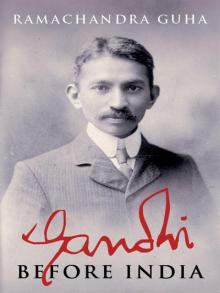 Gandhi Before India
Gandhi Before India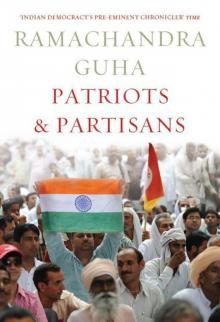 Patriots & Partisans
Patriots & Partisans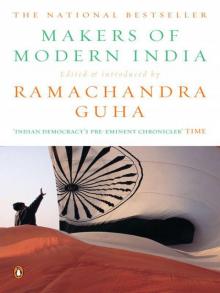 Makers of Modern India
Makers of Modern India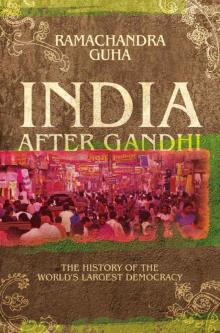 India After Gandhi: The History of the World's Largest Democracy
India After Gandhi: The History of the World's Largest Democracy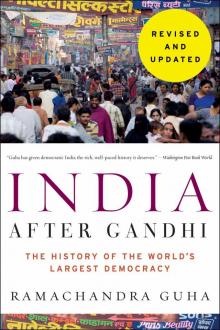 India After Gandhi Revised and Updated Edition
India After Gandhi Revised and Updated Edition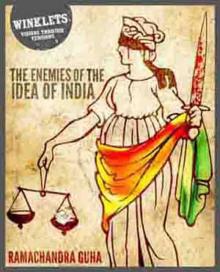 The Enemies of the Idea of India
The Enemies of the Idea of India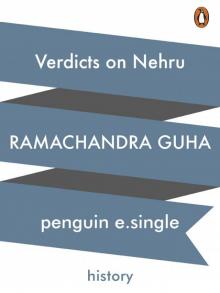 Verdicts on Nehru
Verdicts on Nehru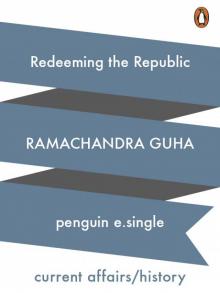 Redeeming the Republic
Redeeming the Republic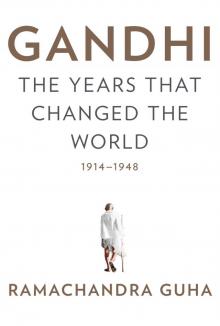 Gandhi
Gandhi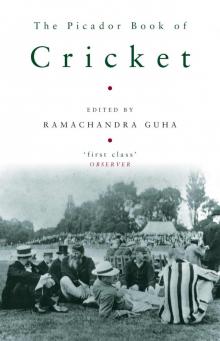 The Picador Book of Cricket
The Picador Book of Cricket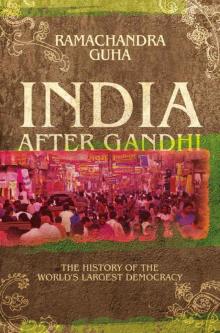 India After Gandhi
India After Gandhi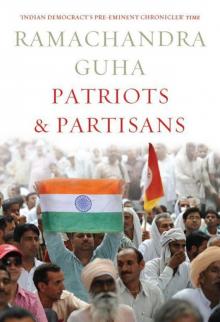 Patriots and Partisans: From Nehru to Hindutva and Beyond
Patriots and Partisans: From Nehru to Hindutva and Beyond